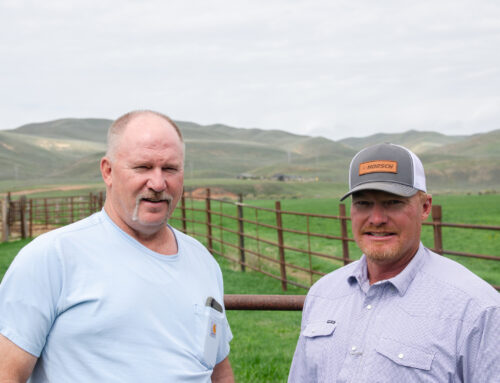Beacon of light: the model village retrofitted into a tiny renewables kingdom
May 14, 2025
Some might describe Alan Budgen as an expert in renewable energy: during the past few months alone, he built dozens of solar panels and heat pumps, to be installed on houses across Portsmouth.
But Budgen’s heat pumps aren’t made of metal and they’re significantly smaller than average. “I knew that trying to make a detailed heat pump, and to make a lot of them, would be really difficult,” he explains. “So everything was just printed on paper and then stuck on to what’s effectively a cardboard box. They look really effective, you wouldn’t have thought they were flat.”
This all makes much more sense when you realise they’re part of an installation at Southsea Model Village, a 1/12th scale village built in 1956. Commissioned by renewable energy experts Good Energy, Sunshine Place was open for visitors for two weeks in April, with the aim of inspiring both members of the public and policymakers about what a sustainable future could look like.
The little village that aims to change minds
By showing green energy systems in action (on a small scale), Good Energy is proving that clean, renewable energy isn’t just for the few, it’s for everyone
Find out more
In Sunshine Place, you’ll find busy mini engineers installing green tech on buildings of all shapes and sizes, from traditional cottages to newer builds. It is an intentional part of the message, says Good Energy CEO Nigel Pocklington: “The misconception is that heat pumps don’t work in old or traditionally built houses. Actually, about 40% of the work we do is helping people to get off bottled gas and heating oil. These are going into old, stone-built homes and we have some very happy customers because of it.”
Similarly, he says many people don’t realise how quickly households can become energy independent with a small number of solar panels. “It is the most concrete step you can take to stop wincing whenever you see your energy bill,” he adds.
While Pocklington believes the smiles raised by the miniatures can make homeowners think again, the installation had wider ambitions. It served as a launchpad for a trio of policy asks from Good Energy that, if realised, could make a huge impact on the way we power our homes.
First, the company is calling for the government to revisit the so-called ‘sunshine bill’, which would have mandated all newbuild homes include solar panels from 2026. Brought as a private members’ bill, it is designed to tackle both the climate crisis and the soaring cost of energy bills.
While the bill was rejected in January over fears it would impact the cost and supply of housing, there is hope on the horizon. In late April, The Times reported it had seen documents suggesting a similar policy could be implemented by 2027. While it has not yet been announced as policy, Pocklington is optimistic, saying it could be “this government’s easiest climate win” and a “rooftop revolution”.
“We were big proponents of the sunshine bill,” he explains. “It was the most practical way the government could get anywhere near its net zero [energy] 2030 target, because it’s super easy to do. It doesn’t depend on new technologies or changes to the planning system.”
Installing solar panels is the most concrete step you can take to stop wincing whenever you see your energy bill
Coupled with the government’s commitment to build 1.5m new homes over the next five years, Good Energy calculates that this could create an additional 6gw of energy for the National Grid – enough to power a further 1.1m homes on top of those that have panels.
The campaign also calls to move the current taxes on electricity to general taxation, to incentivise greener choices. Currently, says Pocklington, “electricity is artificially expensive compared to gas, so find somewhere else to put [those taxes].”
Finally, the campaign asks for more targeted support for lower-income households that want to switch to renewable energy.
But could this micro village really be a blueprint for communities across the UK? Steve Mewes thinks so. As the chair of Green Wedmore, he has overseen a raft of community-led projects in his traditional Somerset village, including two solar farms, and a mission to get solar on every community building and some 1,000 homes.
While there is an immense amount of ongoing action needed if we’re to tackle the climate crisis, he reckons Wedmore is a microcosm of what’s possible. Some 350 houses now have solar panels, along with the village school, bowling club, sports pavilion and three village halls, one of which was built 160 years ago. All that’s left is the medieval Grade-I listed church, which the church council is supportive of.
The key, he says, is reframing the discussion. He doesn’t focus on the fact that no other churches in Somerset have solar yet. Instead, he points to examples like Salisbury, Chester and Gloucester cathedrals, all of which have been fitted with solar panels. “It is all possible, you don’t have to interfere with the fabric of the building. Wedmore is a classic English rural village: there are all sorts of styles and ages of properties, from brand new houses to those that are about 400 years old. Over the years, solar has been put on almost every type. You get a sort of tipping point.”
Back at Southsea Model Village, Pocklington hopes politicians are listening. In the tiny tableau, his figurine is ‘chatting’ to energy secretary Edward Miliband. What’s he saying to him? “I think I’m encouraging him to have the courage of his convictions on the solar energy bill and to keep championing a massive rooftop rollout.”
Photography: Good Energy/Ed Hill/PA Media
Search
RECENT PRESS RELEASES
Related Post



